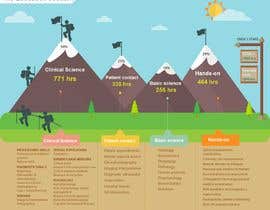Next-Generation Approaches To Back Pain Alleviation: Emerging Technologies And Therapy Methods
Next-Generation Approaches To Back Pain Alleviation: Emerging Technologies And Therapy Methods
Blog Article
Material By-Adler Day
As you think about the future landscape of neck and back pain treatment, imagine a realm where innovation flawlessly links with standard treatments to supply novel services. Think of a world where virtual reality not just entertains but also heals, where robot accuracy redefines minimally invasive treatments, and where psychophysiological feedback equips individuals in their discomfort administration trip. The innovations in neck and back pain treatments are not just theoretical situations yet tangible realities shaping the method we approach and reduce this prevalent condition.
Virtual Reality Treatment for Back Pain
Are you tired of traditional therapies for your neck and back pain? Virtual Reality Therapy supplies a novel approach to managing your discomfort. By engaging on your own in a digital environment, you can distract your mind from the pain signals being sent to your brain, providing relief in an unique and innovative method.
Using customized virtual reality headsets, you can engage in different tasks and simulations made to target certain locations of your back that are causing you discomfort. These immersive experiences can help you relax stressful muscles, boost your posture, and raise your general wheelchair.
Additionally, virtual reality treatment can likewise help in lowering tension and anxiousness levels, which are often adding elements to back pain.
Think of having the ability to undertake treatment without the demand for medicine or intrusive procedures. With Virtual Reality Treatment, you have the opportunity to manage your pain in the back in a risk-free and non-intrusive way.
Robotic-Assisted Back Pain Therapies
Using advanced robot innovation, pain in the back treatments have advanced to include robot help in targeting and addressing specific locations of pain in a precise and regulated way.
Robotic-assisted pain in the back therapies provide a high degree of accuracy and personalization, allowing for much more effective and tailored therapy for people experiencing back pain. These robot systems can carry out minimally intrusive procedures with improved accuracy, reducing the risk of complications and improving end results.
Robotic-assisted treatments give cosmetic surgeons with real-time comments and imaging, enabling them to browse the spinal column with unmatched precision. By using https://rutherfordsource.com/smyrnas-25th-annual-halloween-in-the-park-drew-thousands/ or devices, doctor can access hard-to-reach areas with higher simplicity, causing even more effective treatments.
In addition, these technologies can adjust to the individual's activities during surgery, making sure a safer and more trusted treatment.
Psychophysiological Feedback Technology in Pain In The Back Monitoring
With the improvement of technology in pain in the back therapies, psychophysiological feedback innovation becomes an important device in managing and minimizing discomfort associated with pain in the back. Psychophysiological feedback allows you to gain understanding and control over bodily functions that are normally uncontrolled, such as muscular tissue tension and heart price.
By utilizing sensing units to monitor these features, psychophysiological feedback devices supply real-time data that allows you to make mindful modifications to minimize discomfort and stress degrees. Through visual or auditory cues, psychophysiological feedback aids you understand just how your body replies to different circumstances, equipping you to change your actions and enhance physical wellness.
acupuncture and sleep issues promotes leisure, enhances pose, and help in muscular tissue re-education, all of which are crucial components in handling neck and back pain effectively. By integrating biofeedback right into your pain in the back administration plan, you can take an energetic duty in your therapy and achieve long-term remedy for pain.
Conclusion
Finally, the future of neck and back pain therapy looks intense with the innovations in virtual reality treatment, robotic-assisted treatments, and psychophysiological feedback modern technology. These emerging innovations use innovative services to reduce pain in the back, improve flexibility, and enhance total quality of life. With proceeded r & d, these innovative treatments have the possible to revolutionize the method we come close to and treat neck and back pain, supplying wish for those looking for effective and individualized services.
